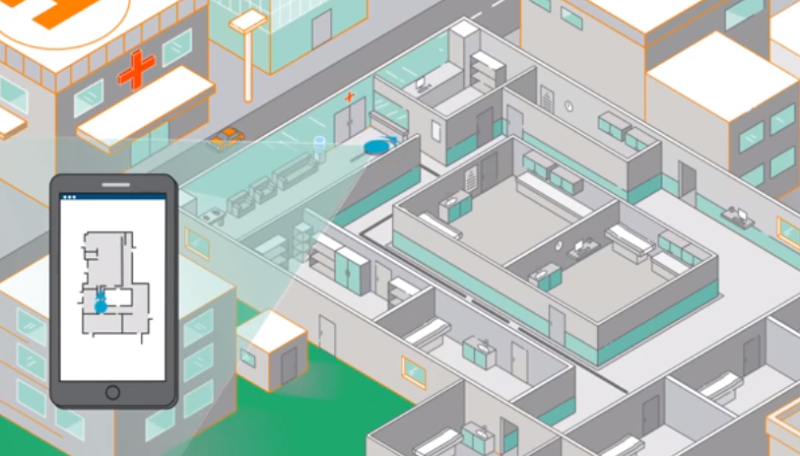Aruba Networks Enables “Blue-Dot” Indoor Navigation With Beacons
WiFi provider Aruba Networks used to offer retailers and others “blue-dot” indoor navigation using WiFi triangulation. However Apple’s recent decision in iOS 8 to randomize the iPhone’s MAC address changed all that — and may have effectively killed WiFi as an indoor location technology. Beyond this, WiFi is expensive and requires significant IT involvement. Beacons […]
WiFi provider Aruba Networks used to offer retailers and others “blue-dot” indoor navigation using WiFi triangulation. However Apple’s recent decision in iOS 8 to randomize the iPhone’s MAC address changed all that — and may have effectively killed WiFi as an indoor location technology.
Beyond this, WiFi is expensive and requires significant IT involvement. Beacons by comparison are cheap and don’t implicate IT infrastructure to the same degree.
Now, in an industry first, Aruba has developed viable indoor turn-by-turn indoor navigation using beacons and a process called “trilateration.” The company didn’t invent trilateration but to my knowledge it is the first company that has successfully implemented it in the real world. Trilateration is like triangulation except with beacons instead of WiFi or cell towers.
Aruba has a massive beacon deployment in the San Francisco 49ers Levi’s Stadium in Santa Clara California. The 49ers app delivers real-time, blue-dot navigation around the stadium.
Beacon trilateration hasn’t been successfully accomplished in the past, partly because there haven’t been enough beacons deployed in locations and because their low power system — beacons use Bluetooth Low Energy to minimize battery drain — hasn’t created strong enough or stable-enough signals to manage “blue dot” navigation.
(As an aside Indoor Atlas enables indoor, blue-dot navigation using geo-magnetic positioning but that’s a completely different technology — though it is beacon compatible. It’s not widely deployed however)
Aruba has developed beacons that can be plugged into walls in addition to running on batteries and can be managed remotely in the cloud at scale. This enables major public venues and retailers with hundreds of stores to manage the thousands of beacons required to deliver turn-by-turn indoor navigation.
You need a lot more beacons and beacon density to pull off trilateration. There are more than 1,000 beacons in Levi’s Stadium for example. They can navigate you to your seats, to food vendors and to merchandise locations around the stadium, in addition to triggering notifications based on your location in the arena.
Beacons are highly privacy friendly because they require apps to receive and interpret their signals. Bluetooth must also be turned on. Consumers thus have significant control over whether they engage with beacons and whether they allow beacons to see them.
For this reason and others (especially cost) beacon adoption is gaining increasing momentum. And Aruba’s trilateration is something of a breakthrough for the entire ecosystem.
Contributing authors are invited to create content for Search Engine Land and are chosen for their expertise and contribution to the search community. Our contributors work under the oversight of the editorial staff and contributions are checked for quality and relevance to our readers. Search Engine Land is owned by Semrush. Contributor was not asked to make any direct or indirect mentions of Semrush. The opinions they express are their own.



